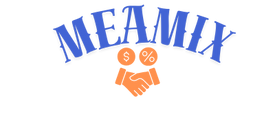Loans are a vital part of modern life, offering individuals, businesses, and organizations the necessary capital to meet immediate needs or fund long-term projects. With various types of loans available, it can be overwhelming to determine which one is right for your situation. Whether you’re considering a loan for personal use, a home purchase, or expanding your business, it’s crucial to understand the different types and how they work. This comprehensive guide will break down the most common loan types and provide you with the knowledge to make an informed decision.
1. Personal Loans
Personal loans are unsecured loans, meaning they don’t require collateral, such as a house or car. These loans are typically used for consolidating debt, funding major purchases, or covering unexpected expenses. The approval process for personal loans generally involves checking the borrower’s credit score and income level.
Key Features:
- Amounts range from a few thousand to tens of thousands of dollars.
- Interest rates can vary depending on your credit score.
- Repayment periods typically range from 1 to 5 years.
- Fixed or variable interest rates.
2. Mortgage Loans
A mortgage is a loan specifically for purchasing property, usually a home. In this case, the property itself serves as collateral. If the borrower fails to repay the loan, the lender has the right to foreclose on the property. There are several types of mortgage loans, including fixed-rate and adjustable-rate mortgages.
Key Features:
- Large loan amounts, typically spanning decades (15, 20, or 30 years).
- Fixed or adjustable interest rates.
- Typically requires a down payment.
- Loan is secured by the property.
3. Auto Loans
Auto loans are designed to help borrowers purchase vehicles, with the car acting as collateral for the loan. If you fail to repay, the lender can repossess the vehicle. Auto loans typically come with lower interest rates compared to unsecured loans because the loan is secured by the vehicle.
Key Features:
- Fixed interest rates and monthly payments.
- Loan amounts based on the car’s value.
- Term lengths range from 3 to 7 years.
- Requires a down payment in many cases.
4. Student Loans
Student loans help cover the cost of higher education, including tuition, books, and living expenses. They come in two types: federal and private. Federal student loans are typically offered by the government and offer lower interest rates, more flexible repayment terms, and the possibility of loan forgiveness. Private loans are offered by banks or other financial institutions and usually come with higher interest rates and fewer borrower protections.
Key Features:
- Can be subsidized (the government pays interest while you’re in school) or unsubsidized (interest accumulates while you’re in school).
- Flexible repayment options, including income-driven plans.
- Long repayment terms, typically 10 to 25 years.
- Eligibility depends on enrollment in an accredited educational institution.
5. Credit Card Loans
Credit card loans, or credit card debt, are revolving loans that allow borrowers to borrow money up to a certain credit limit. Credit card loans tend to have higher interest rates than other loan types. They are unsecured, meaning they don’t require collateral, but failing to repay on time can lead to high-interest penalties and damage to your credit score.
Key Features:
- Flexible borrowing and repayment terms.
- High interest rates, especially if you carry a balance.
- Minimum monthly payments required.
- Revolving credit line, meaning you can borrow and repay multiple times.
6. Home Equity Loans and Lines of Credit (HELOC)
A home equity loan allows homeowners to borrow money using the equity in their home as collateral. The loan is typically given as a lump sum with fixed monthly payments, while a home equity line of credit (HELOC) works more like a credit card, offering a revolving line of credit.
Key Features:
- Borrowing amounts depend on the home’s value and equity.
- Interest rates are often lower because the loan is secured by your home.
- Home equity loans have fixed rates, while HELOCs may have variable rates.
- May involve closing costs or fees.
7. Business Loans
Business loans are designed for entrepreneurs and business owners who need funding to start or grow their businesses. These loans can be used for equipment purchases, hiring staff, marketing, or expanding operations. Business loans can either be secured or unsecured, and they come with varying interest rates and repayment terms depending on the lender.
Key Features:
- Can be used for various business purposes.
- Can be secured (requiring collateral) or unsecured (without collateral).
- Repayment terms vary, with options for both short-term and long-term loans.
- May require a business plan and proof of revenue.
FAQs About Loans
- What is the difference between a secured and unsecured loan?
- A secured loan requires collateral (like a home or car) to back the loan, while an unsecured loan does not. Secured loans typically have lower interest rates.
- Can I get a loan with bad credit?
- Yes, but you may face higher interest rates or stricter approval requirements. Some lenders specialize in loans for individuals with poor credit.
- What is the typical interest rate on a personal loan?
- Interest rates vary based on your credit score, but they typically range from 6% to 36% for personal loans.
- How long does it take to get approved for a loan?
- Approval time varies depending on the loan type. Personal loans can be approved in a few days, while mortgages may take a few weeks.
- What is loan amortization?
- Loan amortization refers to the process of paying off a loan with regular payments over time. A portion of each payment goes toward the principal, and the rest goes toward interest.
- Can I pay off my loan early?
- Yes, most loans allow you to pay them off early. However, some loans may have prepayment penalties.
- What happens if I miss a loan payment?
- Missing a payment can result in late fees, higher interest rates, and damage to your credit score. It’s essential to communicate with your lender if you’re unable to make a payment.
Conclusion
Understanding the different types of loans is essential for making sound financial decisions. Whether you’re purchasing a home, funding your education, or starting a business, the right loan can provide the necessary capital to achieve your goals. It’s crucial to assess your financial situation, interest rates, repayment terms, and the type of loan that best suits your needs.
Key Takeaway
- Loans come in various forms, such as personal loans, mortgages, auto loans, and student loans, each serving a specific purpose.
- Secured loans typically offer lower interest rates, but they require collateral, while unsecured loans do not.
- Always consider your ability to repay a loan before borrowing, and be sure to understand the terms and conditions involved.




